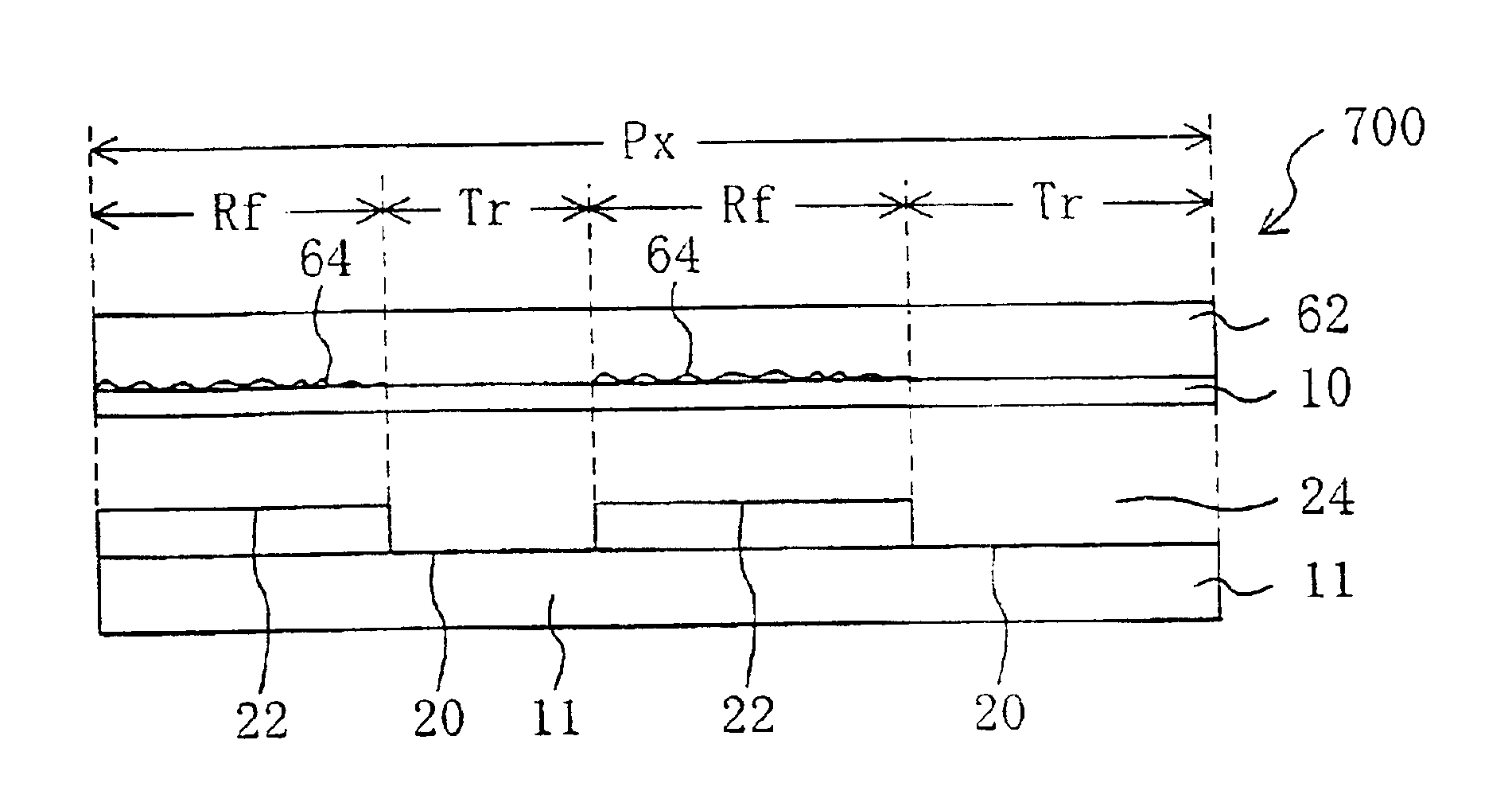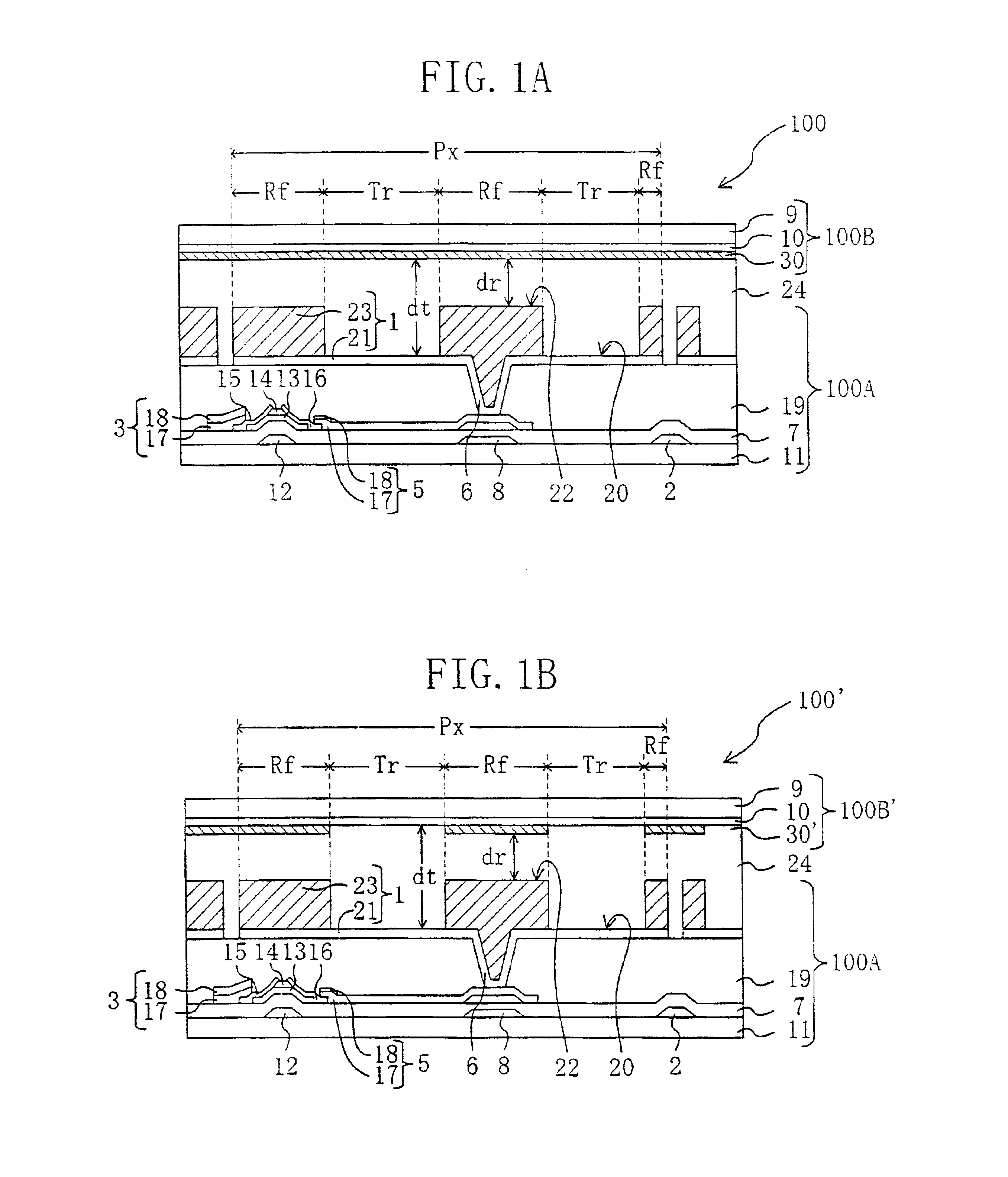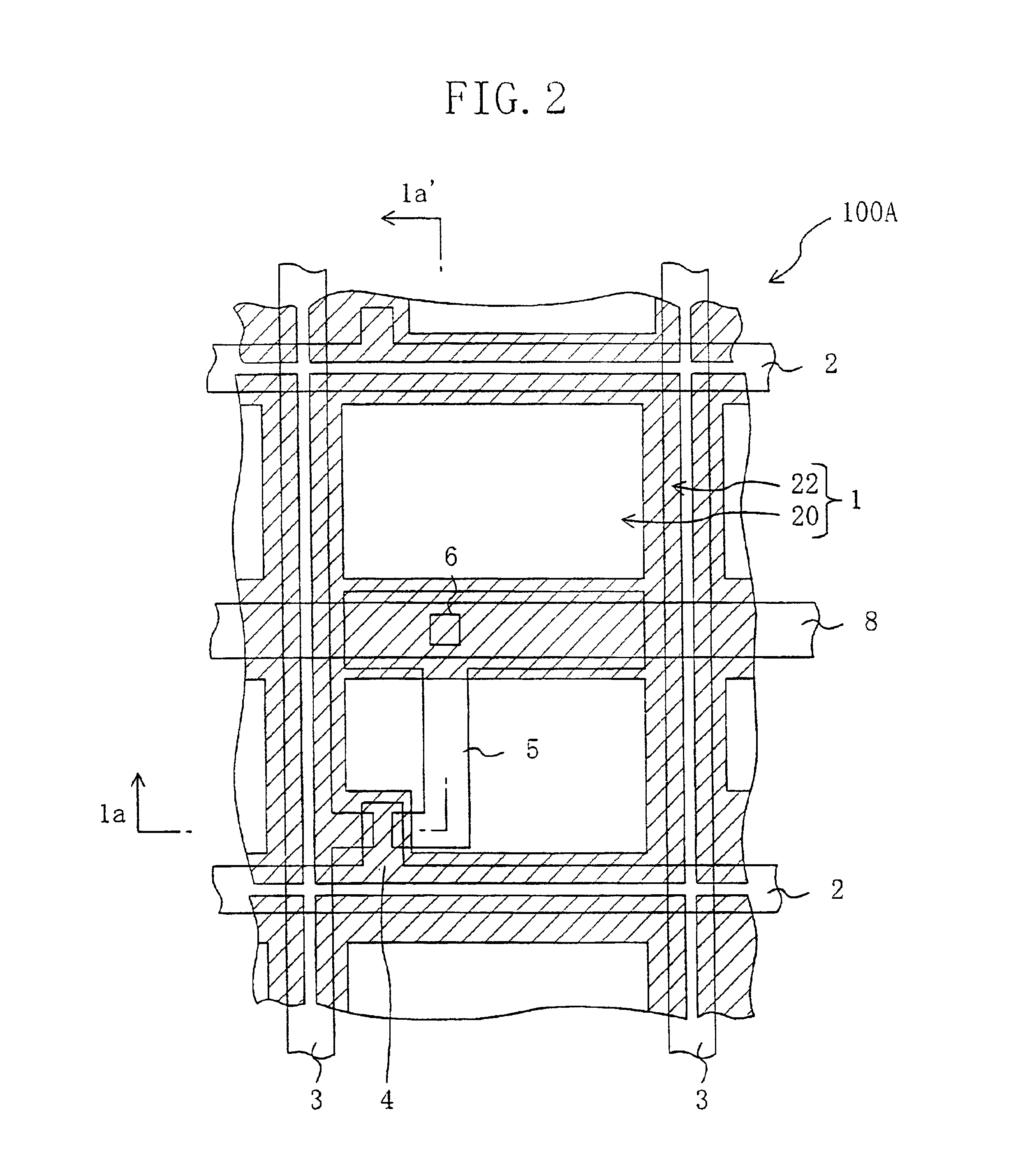Liquid crystal display device with a light diffusion layer in the reflection region alone
a liquid crystal display device and light diffusion layer technology, applied in non-linear optics, instruments, optics, etc., can solve the problems of large power consumption, deformation of visibility, and approximately 50% or more of back light power consumption, and achieve easy and accurate control, easy formation, and simplified fabrication process of liquid crystal display devices
- Summary
- Abstract
- Description
- Claims
- Application Information
AI Technical Summary
Benefits of technology
Problems solved by technology
Method used
Image
Examples
embodiment 1
[0044]In a liquid crystal display device of Embodiment 1, a light diffusion layer is disposed on the inside (on a side closer to a liquid crystal layer) of a second substrate (disposed on a side closer to an observer) opposing a first substrate (disposed on a side closer to a back light) with the liquid crystal layer sandwiched therebetween.
[0045]FIGS. 1A and 1B respectively show the schematic sectional structures of liquid crystal display devices 100 and 100′ of this embodiment. FIGS. 1A and 1B are cross-sectional views of the liquid crystal display devices 100 and 100′ of this embodiment, and FIG. 2 is a plan view of an active matrix substrate 100A used in the liquid crystal display devices 100 and 100′.
[0046]Each of the transmission / reflection type liquid crystal display devices 100 and 100′ includes, as is shown in FIGS. 1A and 1B, a transmission region Tr and a reflection region Rf in each of plural pixel regions Px arranged in the form of a matrix, so as to display images in a...
embodiment 2
[0090]A liquid crystal display device according to Embodiment 2 is different from the liquid crystal display devices of Embodiment 1 in including a light diffusion layer disposed on the outside of a second substrate (a side closer to an observer) opposing a first substrate (closer to a back light) with a liquid crystal layer sandwiched therebetween. In drawings showing liquid crystal display devices of Embodiment 2, the same reference numerals are used to refer to elements substantially having the same functions as those used in the liquid crystal display devices of Embodiment 1 so as to omit the description.
[0091]FIGS. 12A and 12B respectively show the schematic sectional structures of the liquid crystal display devices 1000 and 1000′ of Embodiment 2. The liquid crystal display devices 1000 and 1000 of FIGS. 12A and 12B are respectively different from the liquid crystal display devices 200 and 200′ of FIGS. 4A and 4B in disposing the light diffusion layer 30 on the outside (a side ...
embodiment 3
[0100]A liquid crystal display device according to Embodiment 3 is similar to the liquid crystal display devices of Embodiment 2 in disposing a light diffusion layer on the outside (a side closer to an observer) of a second substrate (closer to the observer), but is different in further including an anti-glare layer on the outside of the second substrate. In drawings showing liquid crystal display devices of Embodiment 3, the same reference numerals are used to refer to elements having substantially the same functions as those of the liquid crystal display devices of Embodiment 1 and 2 so as to omit the description. Also, detailed description of the structures of the transparent electrode region 20 and the reflection electrode region 22 is omitted for simplification.
[0101]FIG. 15 is a schematic sectional view of a liquid crystal display device 1300 of Embodiment 3. The liquid crystal display device 1300 of FIG. 15 is obtained by providing an anti-glare layer 94 on the surface closer...
PUM
| Property | Measurement | Unit |
|---|---|---|
| heat resistance | aaaaa | aaaaa |
| particle size | aaaaa | aaaaa |
| particle size | aaaaa | aaaaa |
Abstract
Description
Claims
Application Information
 Login to View More
Login to View More - R&D
- Intellectual Property
- Life Sciences
- Materials
- Tech Scout
- Unparalleled Data Quality
- Higher Quality Content
- 60% Fewer Hallucinations
Browse by: Latest US Patents, China's latest patents, Technical Efficacy Thesaurus, Application Domain, Technology Topic, Popular Technical Reports.
© 2025 PatSnap. All rights reserved.Legal|Privacy policy|Modern Slavery Act Transparency Statement|Sitemap|About US| Contact US: help@patsnap.com



